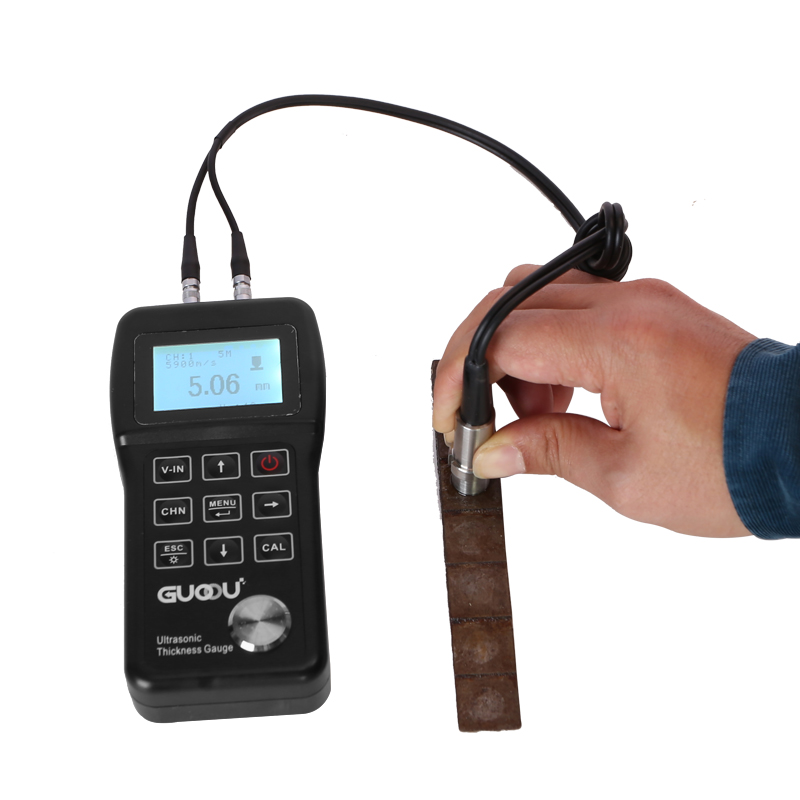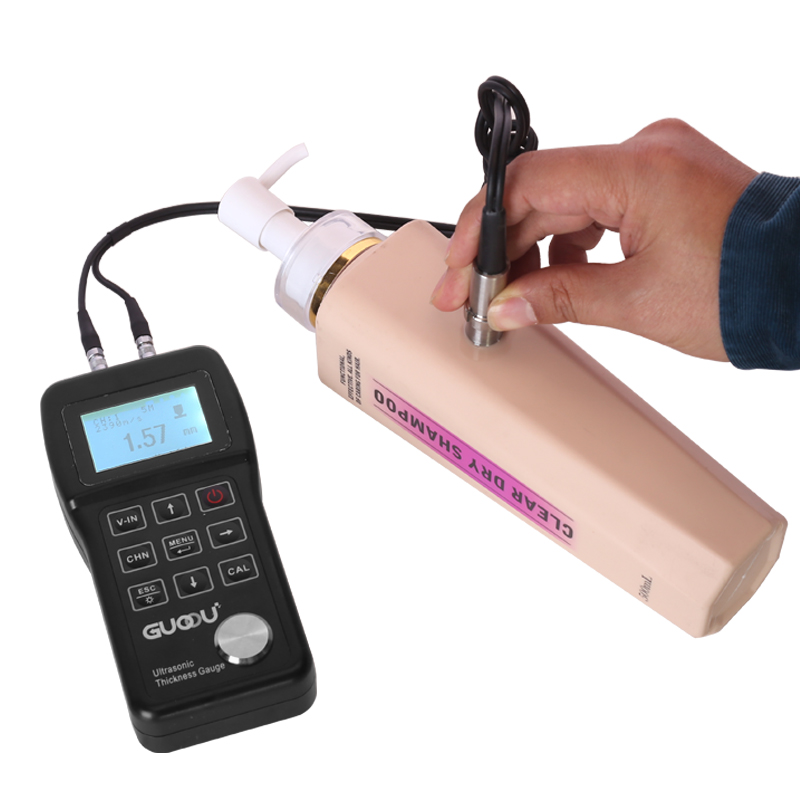
Ultrasonic coating thickness gauges are now widely used in various fields such as petroleum, chemical industry, metallurgy, shipbuilding, aviation and aerospace.
The ultrasonic coating thickness gauge is based on the principle of ultrasonic pulse reflection for thickness measurement. When the ultrasonic pulse emitted by the probe reaches the interface of the material through the measured object, the pulse is reflected back to the probe by accurately measuring the time that the ultrasonic wave travels in the material. Determine the thickness of the material to be measured.
Let's talk about the parameters and measurement methods of the ultrasonic coating thickness gauge below :
Parameters and measurement methods of digital ultrasonic coating thickness gauge The working environment conditions of digital ultrasonic coating thickness gauge are: test temperature (20±5) ℃, relative humidity 50%~65%; measurement standard: 520μm standard For the thickness test piece, the maximum deviation given in the verification certificate is 0.1μm; the object to be tested is: PosiTecher200 ultrasonic coating thickness gauge; the measuring range is 50~3800μm; the accuracy of the instrument is ±(2.5+3% of reading)μm .
The measurement method is: According to the standard GB/T11344-2008 "Contact Ultrasonic Pulse Echo Thickness Measurement Method", first lay the tested standard test piece on the surface of the hard bottom material, and then perform the zero calibration of the ultrasonic thickness gauge, and then Apply a proper amount of couplant to the surface of the probe and place it on the surface of the tested standard test piece, and apply a certain pressure (20~30N) to ensure a good coupling between the probe and the test piece. Read the thickness after the thickness gauge emits a beep. Value. According to the above method, the 520μm standard thickness test piece was repeatedly measured 20 times.

The following is a brief description of the handling of some special cases encountered in the measurement process of the ultrasonic coating thickness gauge:
1. When there is a corrosion pit on the back, you need to be very careful when measuring this area. You can try to change the angle and position for multiple measurements.
2. When the measurement position is the corner, you need to use the probe to make 3 measurements. In the two measurements, the dividing plane of the probe should be 90° to each other, and take the minimum measurement value.
3. The object to be measured should be parallel to the surface, otherwise the ultrasonic echo will be affected, which will cause measurement errors, or there will be no display of measured values.
4. For laminated materials, composite materials and specific internal structures, common instruments that apply the principle of ultrasonic reflection to measure thickness are not applicable.




